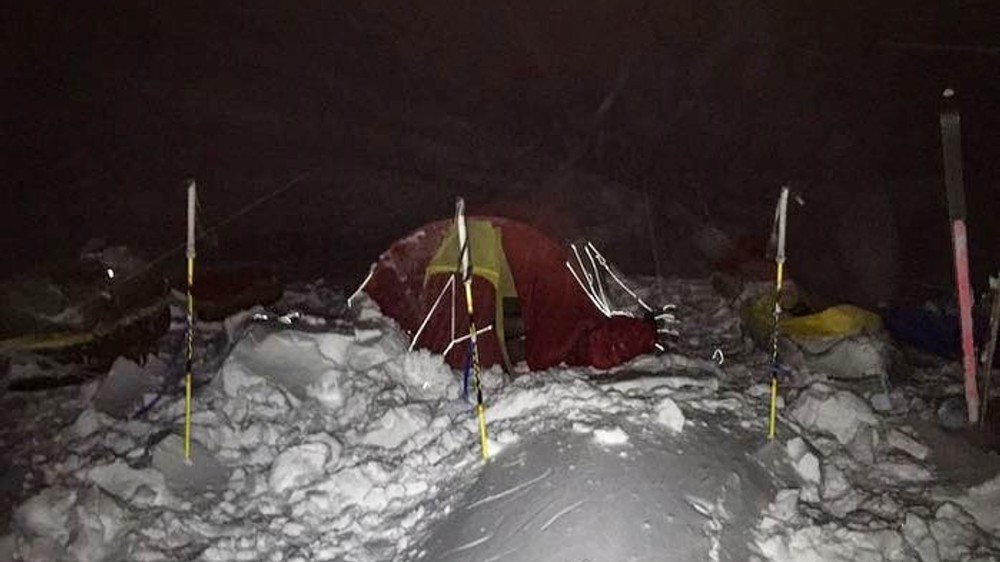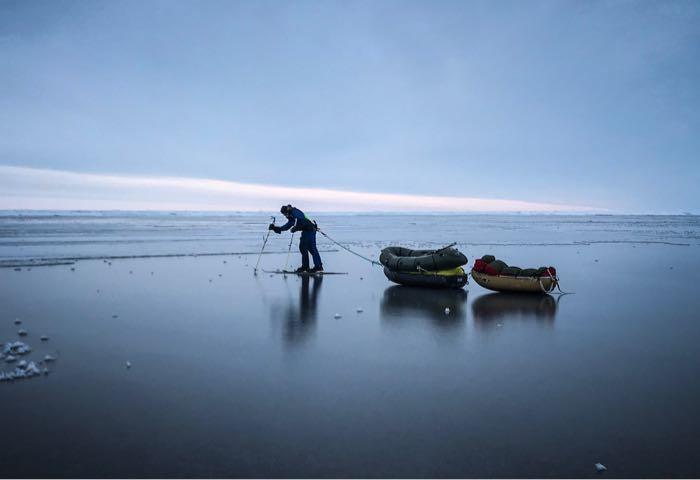Polar trekkers’ progress is halted as food runs out
Børge Ousland and Mike Horn are several hours from a crew sent out with food for them and a day from the support ship sent to pick them up.

Exhausted and out of food after a ski expedition across the North Pole that has taken 10 days longer than planned, on Friday morning two adventurers were close to linking up with a search party sent out to help the pair complete their journey.
High winds and a gap in the ice meant the two groups were not able to reach each other as expected Thursday, but expedition leaders are hopeful that Børge Ousland and Mike Horn will make contact today with Aleksander Gamme and Bengt Rotmo, who were dispatched Tuesday on foot with food and fuel after the support vessel sent to pick up the adventurers became lodged in sea ice.
Ousland, a Norwegian, and Horn, a South African, left Nome, Alaska, by sailboat on August 25 on the first leg of a journey that was expected to end in Svalbard. The pair has been skiing since September 12 after reaching the edge of the sea ice. The sailboat was to continue sailing though the Northwest Passages and meet up with the pair at the edge of the sea ice north of Svalbard after what was planned to be a 75-day journey.
https://www.instagram.com/p/B5nr4SVhlXi/?utm_source=ig_web_copy_link
The ship, the Pangea, which is not capable of sailing in ice, completed its voyage as planned, but Ousland and Horn were slowed by poor ice conditions, encountering thin ice and areas of open water and at times being moved backwards by drifting ice floes. So, on November 25, with rations running out, the support team helping Ousland and Horn requested the Lance, a Norwegian ice-breaking research vessel, to sail into the sea ice to retrieve them, rather than waiting for them to reach the edge.
Despite their exhaustion, Ousland and Horn had been able to trek for 12 hours on Wednesday, travelling beyond the point where they planned to meet with Gamme and Rotmo on Thursday, but they were forced to stop Thursday morning, when they encountered a large gap in the ice. High winds made it impossible to cross the open water in the inflatable packrafts both teams are equipped with.
Even with the delay, Ousland and Horn were in good spirits, according to Ousland.
“I was very worried this morning because yesterday, we were battling with huge open-water leads and didn’t make much progress. But today, the ice has been good. So it looks very promising for meeting up with my friends. It will be in the nick of time, it’s already blowing quite hard and gale force winds are expected later this afternoon. Its day 85 and our last day with own rations and we have two fuel bottles left,” Ousland wrote in an Instagram update.

As of Friday morning, the plan was for Ousland and Horn to rest in their tents and await the arrival of Gamme and Rotmo, who were stopped by the same gap on Thursday evening. At that time, they were an estimated three hours away from Ousland and Horn, but they may have drifted further away while waiting for conditions to change during the night.
Once the two are underway on Friday, Ousland and Horn will be told to turn on signal lights to identify their location in the polar night.
When Gamme and Rotmo arrive, Ousland and Horn will eat and the four will then make their way toward the Lance, which is now estimated to be a day’s journey away from Ousland and Horn’s camp after it had managed to free itself from the ice and was able to move to within 25 kilometres before determining that it risked getting stuck again if it attempted to sail further.
https://www.instagram.com/p/B5qMrGkAgih/?utm_source=ig_web_copy_link
Once the four are on board, the Lance will sail to Svalbard, completing the expedition as planned.
Despite running out of food and fuel, Ousland and Horn repeatedly turned down the option of being picked up by helicopter, according to Lars Ebbessen, who is coordinating the expedition.
“The whole point was to get off a boat, cross the Arctic Ocean and then board a boat again on their own two feet. Getting picked up by helicopter would be an evacuation, and it would be an end to the trip that neither of them was satisfied with,” Ebbesen told NRK, a broadcaster.